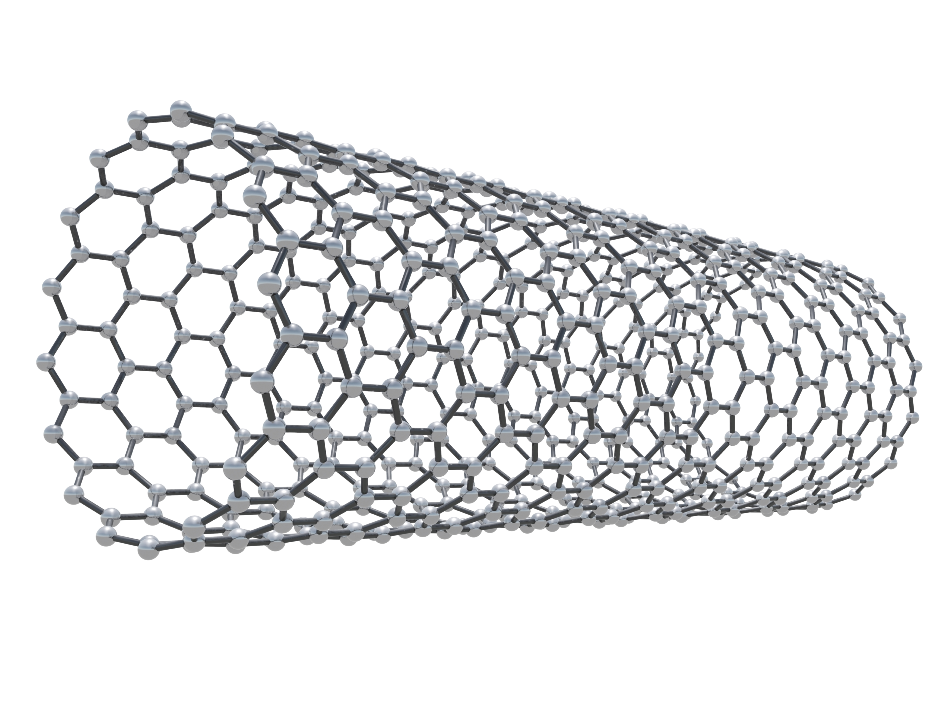Nanotube fibers are a mixture of yarns possessing impressive thermal, chemical, and electrical properties. The yarn holds carbon nanotube fibers, which wrap several electrical charges. These yarn fabrics can also semi-conduct, or super-conduct electrical charges; and, the fibers may be either single or multi-walled nanotubes.

Image Credit: Evannovostro/Shutterstock.com
Although these yarns already share useful and effective properties, varying fabrics can be woven with the materials to introduce a wider variety of mechanical possibilities. Once integrated, these differing fabrics and materials create complex and eccentric structures.
Production Time of Nanotube Fibers
When creating nanotubes, the biggest hindrance, and most time-consuming step, is the length of each nanotube. It is difficult to assemble the tubes with short fibers and unsecured ends; thus several issues can arise and in return, impeding a final product’s end goal.
It was important for manufacturers to resolve the issue of the length of nanotubes; chemical vapor deposition was a technique used to make longer carbon nanotubes. The process involved placing the nanotube’s stimulants and reactants in the reaction chamber. Once they are present in the chamber, researchers will push the reactants through, physically encouraging the nanotubes to grow in the same direction as the push.
Two years ago, at Rice University in Houston, Texas, USA, chemist Matteo Pasquali helped develop a method to decrease the production time of nanofibers. The method encouraged researchers to make smaller fibers, both strong and conductive, from samples of bulk nanotubes. The process took approximately 60 minutes.
In 2013, Pasquali spun full spools of threaded nanotube fibers to operate in automotive applications. The spools of thread were also applicable in areas such as aerospace and medicine. Each fiber resembled a cotton thread, but operated at impressively durable levels, much like metal wires.
Although it generally requires copious material and nearly months of work to perfect spinning continuous fibers, Pasquali’s newer method helped alleviate measures of time by introducing a hands-on, less technological form of processing.
Pasquali’s process is said to reproduce both the increasing nanotube alignment and large packing density of typical fibers made through spinning whilst simultaneously ensuring the right size for strength and conductivity evaluations.
At Rice University, and other labs as well, this break-through method helps build more desirable properties for larger projects. As a more refined and meticulous process, Pasquali confirms that his system detail is unmatchable, leaving little room for inference or uncertainty. By circulating certainty and enabling faster results, Pasquali’s method can guarantee quicker feedback, better quality control, and more exact material measurements.
Nanotube Fibers in the Automotive Industry
The automotive industry is one of the top areas where nanotube fibers excel. As additions of nanotube fibers continue to be more accessible, vehicle manufacturers can build exceptionally robust and lightweight cars. Nanotubes are approximately 20 times more durable than previous materials used in car manufacturing. Carbon nanotubes, specifically, are claimed to be the stiffest substance in the automotive industry.
Since implementing various methods of nanotube production time reduction, it is easier for these materials to be manufactured and therefore, commercialized. These steps to commercializing nanotubes and making their service widespread will ensure better car building at a rapid rate. These fibers will become, and in some instances already have become an everyday factory tool.
In the industry, nanomanufacturing is becoming more and more attainable. As automotive manufacturing continues and nanotube fibers become readily available, car bodies are expected to get lighter and technical, as well as physical car features becoming more effective. Nanotubes that are a carbon fiber product, or carbon nanotubes, tend to be 50% of the weight of other materials such as aluminum, carrying unparalleled levels of strength and aptness.
For vehicles, nanotubes are best applied as reinforcement materials in production. These fibers are the building blocks to final automotive products; apart from their impressive electrical and chemical properties, they are also reliable optically and mechanically, thus making them the ideal component in engineering practices.
Resources:
https://scitechdaily.com/new-technique-dramatically-cuts-production-time-of-nanotube-fibers/
https://trends.directindustry.com/project-15842.html
https://arstechnica.com/science/2018/05/forget-carbon-fiber-we-can-now-make-carbon-nanotube-fibers/
https://www.youtube.com/watch?v=4XDJC64tDR0
Disclaimer: The views expressed here are those of the author expressed in their private capacity and do not necessarily represent the views of AZoM.com Limited T/A AZoNetwork the owner and operator of this website. This disclaimer forms part of the Terms and conditions of use of this website.